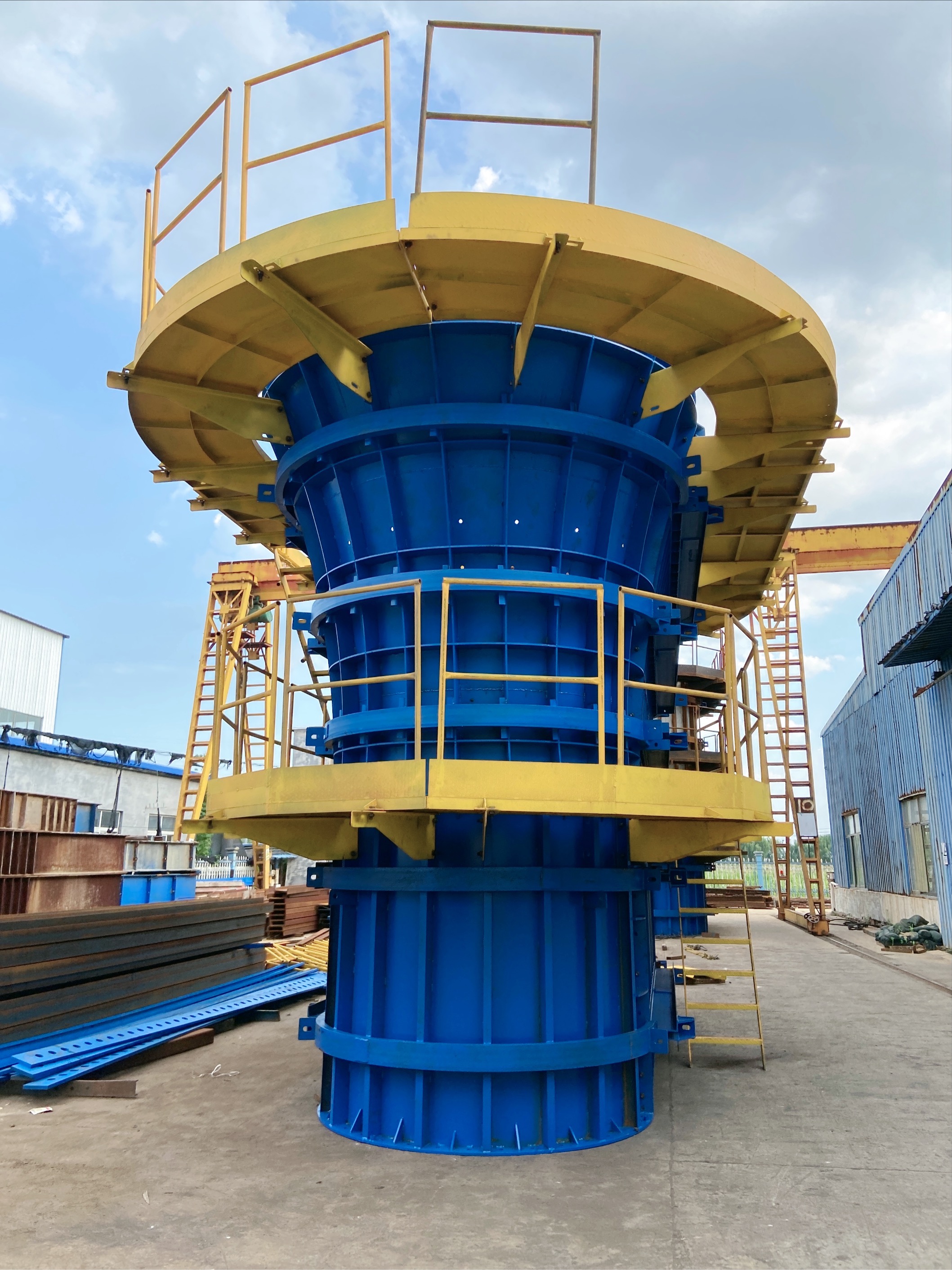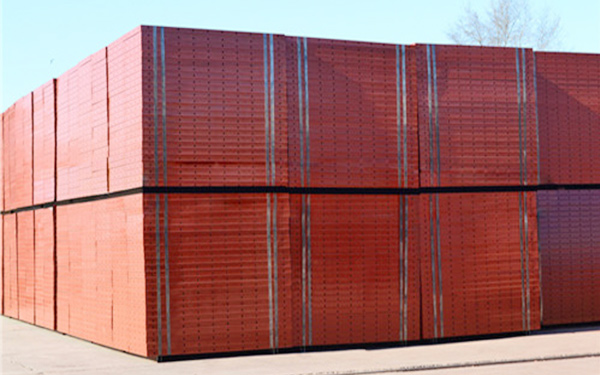Current position:
Home
News home
Industry News
Supply from nearby steel formwork manufacturers: How to extend the service life of formwork in highly corrosive environments?
Supply from nearby steel formwork manufacturers: How to extend the service life of formwork in highly corrosive environments?
source:Shandong Tianhong Heavy Industry Co., Ltd
Abstract:
To extend the lifespan of templates in highly corrosive environments, a systematic protective strategy should be adopted, combined with material upgrades, process optimization, and maintenance strengthening measures. The specific implementation plan is as follows:
1、 Upgrade of corrosion-resistant materials
Preferred stainless steel material
Conventional corrosion environment (pH 6-9): Select 304 stainless steel (Cr18% - Ni8%), with a chloride ion corrosion resistance threshold of 200ppm
Severe corrosive environment (Cl ⁻>500ppm): Upgraded to 316L stainless steel (containing Mo 2% -3%), with a pitting corrosion resistance equivalent PREN ≥ 35
Composite structure optimization
Adopting a composite structure of 5mm stainless steel panel and Q345B carbon steel skeleton, the cost is reduced by 40% compared to all stainless steel, and the anti-corrosion performance is equivalent to pure stainless steel
Core load-bearing components coated with nickel based alloy layer (such as Inconel 625), with temperature resistance increased to 650 ℃
2、 Innovation in surface treatment technology
Applicable scenarios for improving the performance of processing technology
Nano ceramic coating improves wear resistance by 3 times and extends acid corrosion resistance life by 5 times for chemical reaction kettle molds
Laser cladding technology achieves a surface hardness of HRC55 and improves erosion resistance by 70% for coastal pile foundation templates
The bonding strength of duplex stainless steel spray coating is ≥ 50MPa, and the service life of the repair layer reaches 80% of the base material. The corroded template has been repaired
3、 Strengthen the maintenance system
Dynamic monitoring system
Implant corrosion sensors (such as ER probes) to monitor corrosion rate in real-time and automatically alert for exceeding standards
Establish a digital corrosion map to locate high-risk corrosion points (such as welds and corners)
Cleaning and maintenance procedures
Daily cleaning: Use a high-pressure water gun (3-5MPa) to flush surface deposits and prevent electrochemical corrosion
Weekly inspection focus: Check the integrity of the surface passivation film and restore the oxide layer using a 10% citric acid solution
Quarterly deep maintenance: use nitric acid passivation (concentration 20%)+epoxy coating touch up (thickness ≥ 80 μ m)
4、 Economic comparison (using a 10 ton template as an example)
Initial cost of the plan: 5 years, maintenance cost: 10 years, total cost: expected lifespan
Pure carbon steel+ordinary anti-corrosion 42000 yuan 180000 yuan 222000 yuan ≤ 5 years
304 stainless steel composite plate 150000 yuan 60000 yuan 210000 yuan ≥ 15 years
316L+laser cladding 280000 yuan 30000 yuan 310000 yuan ≥ 25 years
Optimal recommendation: 316L composite formwork is recommended for coastal bridge engineering, which saves 35% of the total lifecycle cost compared to carbon steel solutions
5、 Key points of policy compliance
According to the "Durability Code for Concrete Structures of Industrial Buildings" (GB/T 50476), the protection level for heavily corroded areas must reach Level III
The use of water-based anti-corrosion coatings must comply with the Technical Specification for Low Volatile Organic Compound Coatings (HJ 2537-2025)
Preferred stainless steel material
Conventional corrosion environment (pH 6-9): Select 304 stainless steel (Cr18% - Ni8%), with a chloride ion corrosion resistance threshold of 200ppm
Severe corrosive environment (Cl ⁻>500ppm): Upgraded to 316L stainless steel (containing Mo 2% -3%), with a pitting corrosion resistance equivalent PREN ≥ 35
Composite structure optimization
Adopting a composite structure of 5mm stainless steel panel and Q345B carbon steel skeleton, the cost is reduced by 40% compared to all stainless steel, and the anti-corrosion performance is equivalent to pure stainless steel
Core load-bearing components coated with nickel based alloy layer (such as Inconel 625), with temperature resistance increased to 650 ℃
2、 Innovation in surface treatment technology
Applicable scenarios for improving the performance of processing technology
Nano ceramic coating improves wear resistance by 3 times and extends acid corrosion resistance life by 5 times for chemical reaction kettle molds
Laser cladding technology achieves a surface hardness of HRC55 and improves erosion resistance by 70% for coastal pile foundation templates
The bonding strength of duplex stainless steel spray coating is ≥ 50MPa, and the service life of the repair layer reaches 80% of the base material. The corroded template has been repaired
3、 Strengthen the maintenance system
Dynamic monitoring system
Implant corrosion sensors (such as ER probes) to monitor corrosion rate in real-time and automatically alert for exceeding standards
Establish a digital corrosion map to locate high-risk corrosion points (such as welds and corners)
Cleaning and maintenance procedures
Daily cleaning: Use a high-pressure water gun (3-5MPa) to flush surface deposits and prevent electrochemical corrosion
Weekly inspection focus: Check the integrity of the surface passivation film and restore the oxide layer using a 10% citric acid solution
Quarterly deep maintenance: use nitric acid passivation (concentration 20%)+epoxy coating touch up (thickness ≥ 80 μ m)
4、 Economic comparison (using a 10 ton template as an example)
Initial cost of the plan: 5 years, maintenance cost: 10 years, total cost: expected lifespan
Pure carbon steel+ordinary anti-corrosion 42000 yuan 180000 yuan 222000 yuan ≤ 5 years
304 stainless steel composite plate 150000 yuan 60000 yuan 210000 yuan ≥ 15 years
316L+laser cladding 280000 yuan 30000 yuan 310000 yuan ≥ 25 years
Optimal recommendation: 316L composite formwork is recommended for coastal bridge engineering, which saves 35% of the total lifecycle cost compared to carbon steel solutions
5、 Key points of policy compliance
According to the "Durability Code for Concrete Structures of Industrial Buildings" (GB/T 50476), the protection level for heavily corroded areas must reach Level III
The use of water-based anti-corrosion coatings must comply with the Technical Specification for Low Volatile Organic Compound Coatings (HJ 2537-2025)
Disclaimer: The content provided on this website is for reference only (some information is sourced from the internet). The publication of content information is for the purpose of transmission and does not represent the views of this website. If the content involves copyright issues, please contact the website editor in a timely manner, and we will take appropriate measures to avoid unnecessary losses for both parties.
Related article
- Renting steel formwork: What is the price of steel formwork?
- Pulling out Mountains and Rivers for Win Win - Jining Tianli Employees Celebrate National Day Holiday with Tug of War Competition
- Pulling out Mountains and Rivers for Win Win - Jining Tianli Employees Celebrate National Day Holiday with Tug of War Competition
- List of rental prices for steel formwork: Key points for acceptance of bridge formwork after delivery to the construction site
- Customized rental of construction steel formwork: How to prevent and deal with loose joints in steel formwork?
- Renting Steel Formwork Rental Station: How to Determine the Material and Density of Steel Formwork?
- Nearby steel formwork manufacturers: What is the maintenance cycle for stainless steel formwork?
- Manufacturers of composite steel formwork: How to evaluate the corrosion rate of the formwork?
- Bridge anti-collision guardrail steel formwork: What are the common methods for correcting steel formwork?
- Customized manufacturer of composite steel formwork: How to prevent and deal with steel formwork that is not allowed to be reserved or embedded?
- Customized steel formwork manufacturers: How to avoid leakage of grout at the joints of the formwork?
- Pulling out Mountains and Rivers for Win Win - Jining Tianli Employees Celebrate National Day Holiday with Tug of War Competition
Hot article

- T梁模版
- Pulling out Mountains and Rivers for Win Win - Jining Tianli Employees Celebrate National Day Holiday with Tug of War Competition
- 力“拔”山兮,“河”作共赢——济宁天力员工欢度国庆假期之拔河比赛
- Pulling out Mountains and Rivers for Win Win - Jining Tianli Employees Celebrate National Day Holiday with Tug of War Competition
- Pulling out Mountains and Rivers for Win Win - Jining Tianli Employees Celebrate National Day Holiday with Tug of War Competition
- Pulling out Mountains and Rivers for Win Win - Jining Tianli Employees Celebrate National Day Holiday with Tug of War Competition
- Pulling out Mountains and Rivers for Win Win - Jining Tianli Employees Celebrate National Day Holiday with Tug of War Competition
Recommended article

Customized rental of construction steel formwork: How to prevent and deal with loose joints in steel formwork?

Customized rental of steel formwork: What are the dimensions, specifications, and models of steel formwork?
- Customized rental of construction steel formwork: How to prevent and deal with loose joints in steel formwork?
- Customized rental of steel formwork: What are the dimensions, specifications, and models of steel formwork?
- Steel formwork manufacturer supply specifications: What are the applicable fields for steel formwork
- 力“拔”山兮,“河”作共赢——济宁天力员工欢度国庆假期之拔河比赛
- Pulling out Mountains and Rivers for Win Win - Jining Tianli Employees Celebrate National Day Holiday with Tug of War Competition
- Pulling out Mountains and Rivers for Win Win - Jining Tianli Employees Celebrate National Day Holiday with Tug of War Competition
- Pulling out Mountains and Rivers for Win Win - Jining Tianli Employees Celebrate National Day Holiday with Tug of War Competition
- Pulling out Mountains and Rivers for Win Win - Jining Tianli Employees Celebrate National Day Holiday with Tug of War Competition



